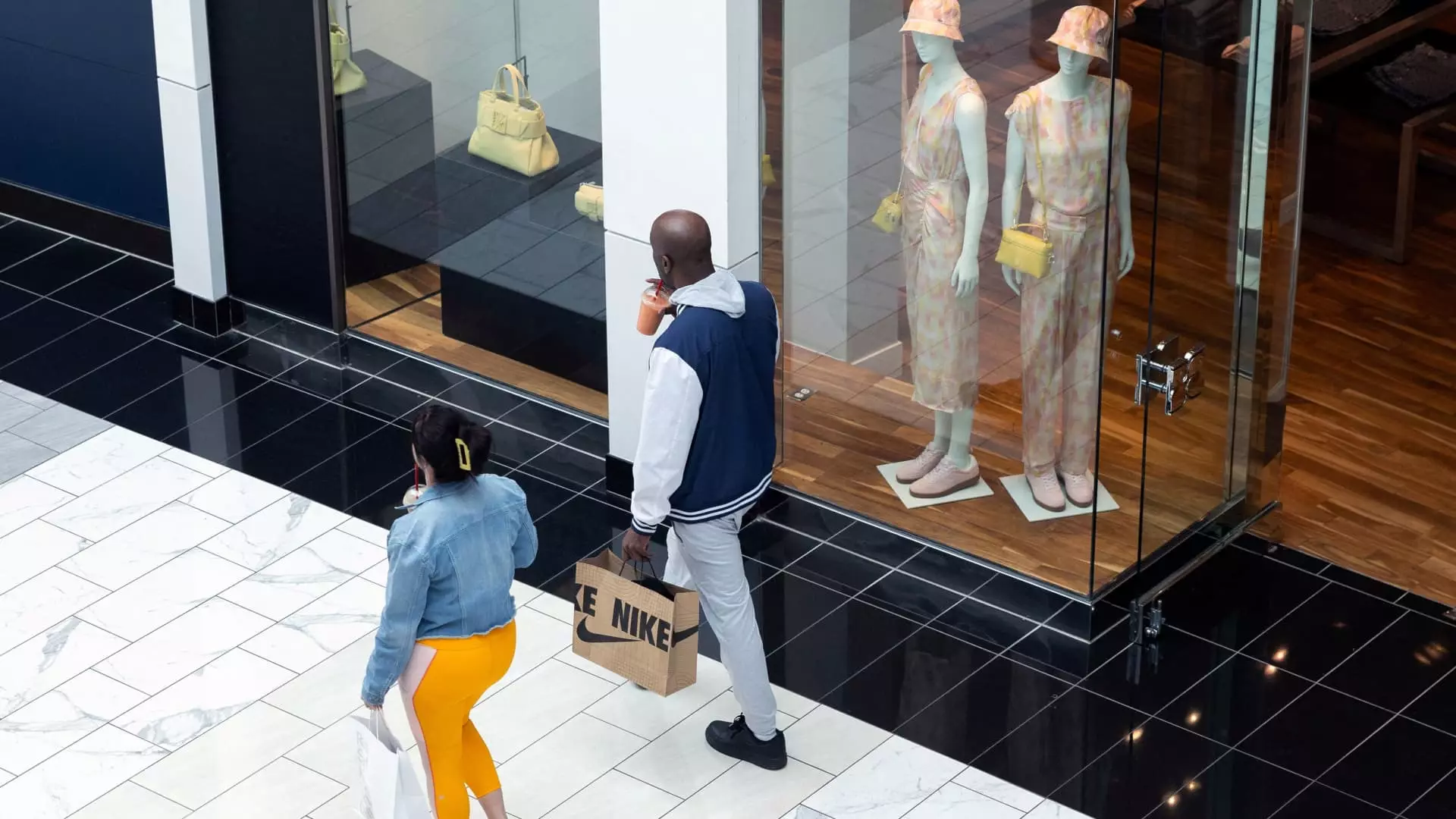In recent months, an unsettling trend has surfaced in how Americans perceive their financial well-being amid economic uncertainty. A staggering 75%, a number that deserves our full attention, of adults report feeling financially stressed. This sentiment is primarily driven by external factors—most notably the complicated landscape of ongoing tariff wars. Even as we browse store aisles laden with products, consumer spending remains resilient, painting an ironically contradictory picture of our economic health. But this façade of normalcy may not last, and the psychological weight tied to financial distress could tip the scales dramatically in the near future.
Recent data illustrates that consumer spending remained surprisingly robust, defying newly heightened recession fears. In March and April, consumer expenditure even exceeded original forecasts, implying a level of economic activity that clashes with prevailing pessimism. However, one must question whether this resilience is merely a mirage, one created by panic buying in response to rising tariffs. As economists point out, maintaining the status quo amid swirling uncertainty does little to legitimize consumer confidence; rather, it disguises a growing crisis lurking beneath the surface.
The Tariff Dilemma: A Catalyst for Heightened Anxiety
The Federal Reserve, notably its Chair Jerome Powell, acknowledges that consumer spending is a vital engine of the U.S. economy. Yet, the economic landscape is unmistakably fraught with tension due to the tariff policies enacted by the Trump administration. Powell’s own forecast suggests these tariffs will result in higher inflation and languishing growth, jeopardizing future consumer spending and, ultimately, our economic fabric. It’s a vicious cycle; increased prices lead to decreased consumer sentiment, and that dimming outlook threatens to spiral into recession.
Tariff policies act like a double-edged sword, igniting worries not just about higher prices but about job stability as well. The Conference Board’s expectations index, a critical measure of consumer outlook, has plunged to lows not seen in over a decade. This creeping unease is further echoed in consumer surveys showing a dramatic decline in confidence as worries about the trade war become more pronounced. Tara Kaur, an analyst from the National Retail Federation, aptly notes that the back-and-forth nature of tariffs and market turmoil serves to erode consumer confidence in both prices and spending.
The Psychological Implications: Spending Patterns and Behavioral Economics
What’s fascinating is the behavioral aspect to all of this. Even amid fears and financial constraints, many consumers have yet to alter their spending habits significantly. This highlights the psychological complexity of consumer behavior, revealing that people have an inherent inclination toward inertia; we are creatures of habit after all. Indarte, an academic authority on finance, states that while consumers may intend to cut back on spending, they often fail to do so substantially due to behavioral biases. The lure of familiarity—the comfort of frequenting the same restaurants or shopping at the same stores—stands in direct opposition to the economic realities they face.
This tension between what we want—or believe we should—do and our actual spending habits poses a significant risk. Should the tipping point be reached, and households find themselves unable to maintain their accustomed lifestyles, the repercussions could be devastating. This scenario is not simply theoretical; experts, including those at JPMorgan, warn that the shock of reduced disposable income may trigger a domino effect, where one individual’s reduced spending impacts another’s income, amplifying the initial shockwaves through the economy.
Finances on the Edge: The Danger of Delayed Adjustments
The crux of the issue lies in understanding how household budgets remain under siege. Individuals and families stand on the precipice of financial strain, and any additional increase in prices could lead to a significant cutback in spending. Greg McBride from Bankrate emphasizes that inflation is central to consumer sentiment and an overarching risk for economic stability. That lingering threat won’t merely subside; it will fester, as consumers’ financial capacities become increasingly strained.
The interplay of these economic stressors frames a disconcerting picture for the future. Analysts indicate that this cycle of anxiety and delayed adjustment may lead to a broader economic contraction. The voices of seasoned economists warn that caution is warranted as we stand at this crossroads; the precarious balance of consumer confidence and spending habits hangs in the balance.
In a world replete with complexities, the gaps between perceptions and reality will continue to test us. The hope is that consumers will eventually adapt to this challenging landscape, but the data suggests that we may already be on the brink of a recession, driven by our collective mindset as much as by economic fundamentals. As events unfold, it remains critical that our policymakers and economic leaders recognize the severity of this situation before it spirals into full-blown crisis.


Leave a Reply